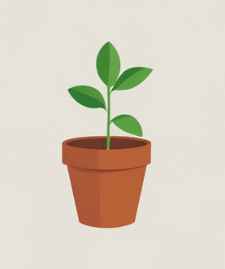Keep Your Plants Healthy and Thriving in Any System
One of the biggest surprises for first-time vertical gardeners?
How quickly things dry out!
Because vertical gardens are stacked, the top layers get a lot of sun and wind exposure, while the bottom ones might get too much moisture—or none at all, depending on your setup.
In this article, I’ll walk you through:
- How vertical systems handle water
- Common watering mistakes
- Simple strategies to get it right
- My own favourite tips from hours of research
Let’s keep those plants happy and hydrated!
🚿 How Water Moves in a Vertical Garden
Unlike raised beds or ground soil, vertical gardens rely on gravity.
Water trickles down from the top and (ideally) filters through each level.
But here’s the catch:
- 💦 The top tiers dry out fastest
- 🪴 The middle zones often do best
- 🌧️ The bottom pockets can stay soggy if drainage is poor
If your system doesn’t distribute water well, you might end up with wilting basil at the top and root rot at the bottom. Not ideal.
❌ Common Watering Mistakes
Let’s get these out of the way first:
1. Watering too quickly
Dumping water in all at once can cause runoff—meaning the top plants barely get a sip.
2. Inconsistent schedule
Vertical systems dry out faster than in-ground beds. Missing a couple of hot days can ruin your whole crop.
3. No drainage
Poorly designed DIY setups may have no drainage holes, leading to mold, rot, or pooling at the base.
4. Only watering the top
Many systems (especially wall planters) don’t allow water to travel far. You may need to water each level manually.
✅ Best Practices for Watering Vertical Gardens
1. Check moisture daily (at least at first)
Use your finger or a moisture meter to check the soil—top, middle, and bottom.
2. Water slowly and evenly
If your system has a top-down flow (like GreenStalk), pour water slowly to give each layer time to absorb.
3. Use a drip irrigation kit
These are perfect for vertical systems and save a ton of time. Look for:
- Adjustable flow heads
- Timers
- Compatibility with small containers
4. Add mulch to exposed pockets
A thin layer of straw, shredded leaves, or even coconut coir helps reduce evaporation—especially on hot balconies.
5. Water in the morning
This gives plants moisture before the heat kicks in, and reduces fungal risk compared to evening watering.
💡 Extra Tips by System Type
🪴 Garden Tower 2
- Water down the compost tube if using it
- Rotate weekly for even sun + water
- Consider bottom tray drainage if plants seem too wet
🌱 GreenStalk
- Use the built-in watering disk
- Water slowly—don’t overfill
- Check for clogs in channels
🌿 Wall Planters
- These often need hand-watering for each row
- Install a simple drip line across the top row if possible
- Be extra careful with drainage and airflow
🧑🌾 My Advice: Start With a Routine
Here’s what I recommend when you’re getting started:
Daily (in hot weather):
- Check top, middle, and bottom
- Water as needed (slowly)
Weekly:
- Rotate tower systems if needed
- Add compost tea or liquid feed
- Check for signs of root rot or dry spots
Over time, you’ll learn your system’s “rhythm”—how fast it dries out, where it struggles, and how your plants signal stress.
🚱 Bonus: Signs Your Plants Are Over or Underwatered
| Symptom | Likely Problem |
|---|---|
| Leaves drooping, soil dusty | Too dry |
| Yellowing leaves, mushy stems | Too wet |
| Browning at tips | Uneven watering |
| Stunted growth | Water not reaching roots |
🌿 Final Thoughts
Watering a vertical garden isn’t hard—but it is different. Once you understand how your system works, it becomes second nature.
Start simple, observe your plants closely, and don’t be afraid to adjust as you go.
Your plants will thank you—with lush herbs, leafy greens, and juicy strawberries all season long!
💧 Looking for the best vertical systems with easy watering? Check out my Garden Tower 2 review
📚 What’s Next?
- 🧑🌾 Vertical Gardening for Seniors: Easy and Back-Friendly Ideas
- 🧪 Garden Tower 2 vs GreenStalk – Which Should You Choose?
- 🔧 DIY Vertical Gardening Ideas (On a Budget)
